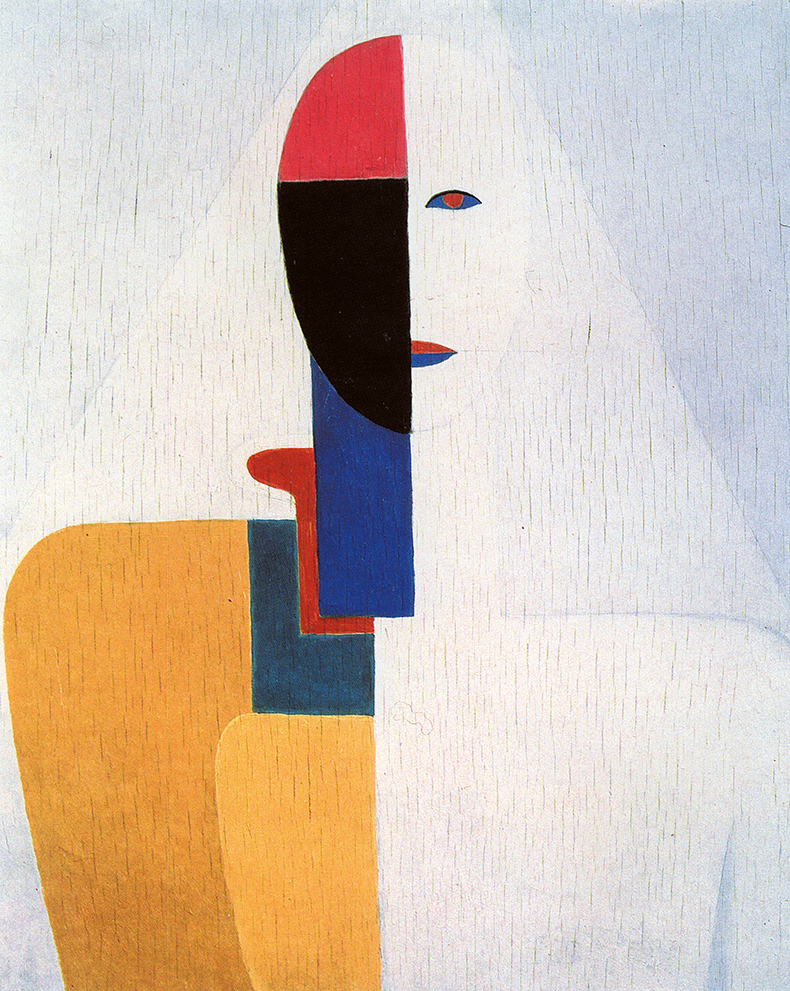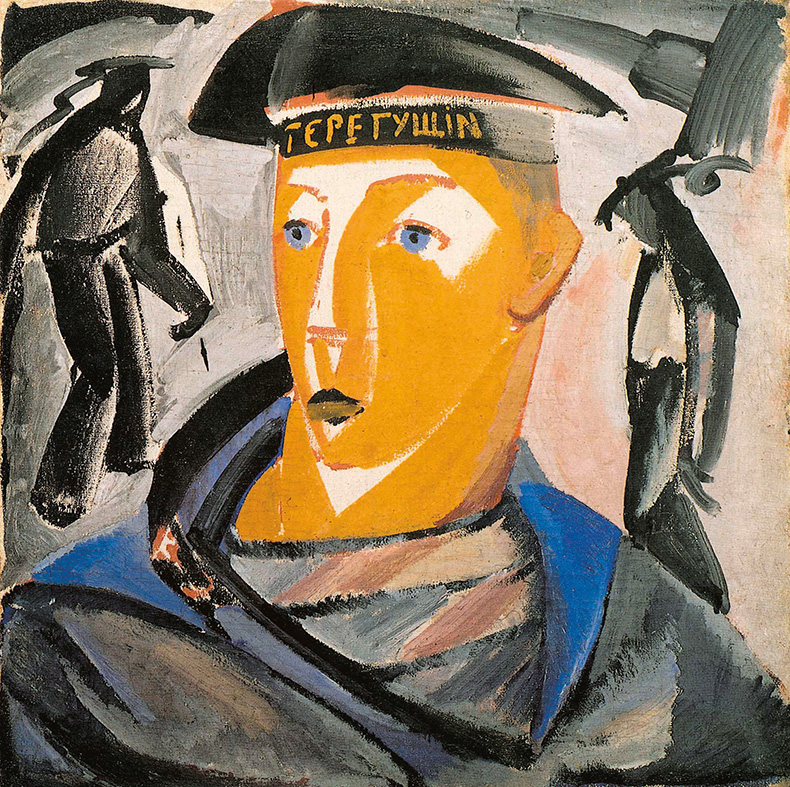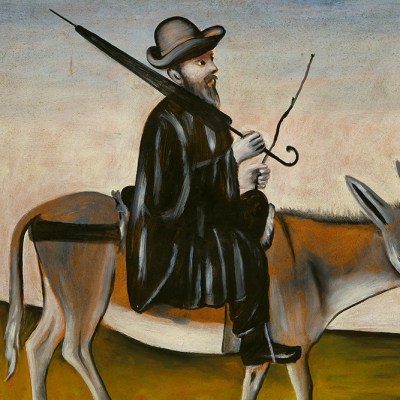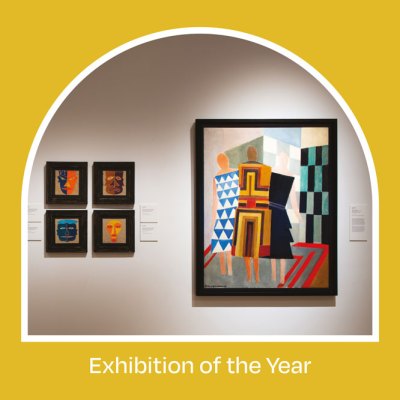This review of The Avant-Gardists: Artists in Revolt in the Russian Empire and the Soviet Union 1917–1935 by Sjeng Scheijen (Thames & Hudson) appears in the June 2024 issue of Apollo. Preview and subscribe here.
One hallmark of early 20th-century European modernism was the number of artist couples engaged in creative partnerships: Kandinsky and Münter in Munich, the Delaunays in Paris, Goncharova and Larionov in Moscow. Another equally distinctive feature were the rivalries among the radical leaders of the avant-garde, whose quest to forge a new artistic language was often fuelled by an intense spirit of competition. Picasso and Matisse naturally spring to mind, but the famous friction of their relationship pales in comparison with that of Kazimir Malevich and Vladimir Tatlin. Their long-running feud forms the backbone of this marvellous book.
For political reasons, next to nothing was known about the Russian avant-garde when Camilla Gray published her groundbreaking study The Great Experiment: Russian Art 1863–1922 at the height of the Khrushchev Thaw in 1962. Since then, and particularly after the opening up of the Soviet Union in the late 1980s, our knowledge of the subject has increased greatly. The authoritative Encyclopaedia of the Russian Avant-Garde, published in four volumes in Russian in 2014, draws on a succession of stellar exhibition catalogues and other publications produced by international scholars over the last decades.
Partly because the subject is now so vast, few non-native authors have followed Grey in attempting a narrative history of Russian revolutionary art. Sjeng Scheijen is well-qualified to do so, however, having curated a number of notable exhibitions of Russian art and written a well-received biography of Diaghilev, not to mention having spent two years working as a cultural attaché at the Dutch Embassy in Moscow. He was originally trained as a Slavist and his approach to the subject is also refreshingly different, since he delves as much, if not more, into biography and political context as into the art itself. Coining the neologism ‘avant-gardists’ from the informal Russian term avangardisty, Scheijen contends that no serious consideration of their work can be complete without a commensurate examination of their life stories. His deeply researched study charts in particular the improbable and brief elevation of radical artists to central positions in the Bolshevik administration in the early revolutionary years, and reveals the rapid ‘orchestration of their own demise’, long before Stalin’s regimentation of the arts in the 1930s. It is a story he tells with verve.
Female Torso (1928–29), Kazimir Malevich. Photo courtesy State Russian Museum, St Petersburg

After the provincial world of Russian art had finally caught up with developments in Western Europe by the eve of the First World War, it was Malevich and Tatlin above all who pushed forward with the artistic revolution that had been underway since the time of the Impressionists. If Tatlin wished to enhance contact with the material world via his ‘counter-relief’ sculptures, Malevich aspired to depart from it via his radical Suprematist paintings. There is something reminiscent here of Dmitry Merezhkovsky’s definition of Tolstoy and Dostoevsky as ‘seers’ of the flesh and the spirit respectively, although as we learn, Malevich was far more earthly than Tatlin in real life. In his introduction, Scheijen discusses the avant-garde’s mission to fuse life with art, but it was more that they regarded art as a matter of life and death importance. This is why it is so gripping to read about Tatlin and Malevich simultaneously coming up with their own conceptual solutions to what they regarded as the impasse of two-dimensional painting, and then embarking on a path of self-destruction in their fanatical pursuit of artistic primacy.
There is little that could be deemed as superfluous in this compelling and voluminous study, and the chapters which explore the creation of Tatlin’s Tower and Chagall’s replacement by Malevich at the art school in Vitebsk are particularly rewarding. All the same, it is a selective account in which some might question the comparative marginalisation of Alexander Rodchenko, the leading spirit of constructivism, and a pioneer in the new arts of graphic design and photography, who flourished in the early 1920s as Malevich and Tatlin floundered. Others might find regrettable the relatively brief coverage of women – the many ‘Amazons’ of the Russian avant-garde – with scant mention of the revolutionary theatre and textile designs of Popova, Ekster and Stepanova, for example.
The appraisal of Kandinsky’s role is also slightly disappointing and occasionally inaccurate. A scion of the merchant class, not the nobility, he did not study law alongside Benois and Diaghilev in St Petersburg, nor was he as distant from the ‘rough radicals in Moscow’ as suggested here. After all, he included a work by Malevich in his Blue Rider almanac in 1912 (reference to the ‘Blue Horseman’ is a rare lapse in a generally superlative translation from the Dutch), and one of Kandinsky’s experimental sound poems was confrontational enough to be included in the notorious Russian Futurist manifesto that same year. During his later Moscow residency, Kandinsky lived in an apartment of the tenement block he owned (appropriated before he could sell it), not in an ‘enormous house’ – and crucially, he left Russia at the end of 1921, not in 1920. Having been ousted from the the Institute of Artistic Culture by Rodchenko, the ‘friend’ who became a turncoat, Kandinsky devoted his last year in the country to the foundation of the Russian Academy of Artistic Sciences.
The occasional inconsistencies (such as the Russian spelling of Odessa combined with the Ukrainian spelling of Kyiv) are minor, but even Tatlin might have bridled at the description of the hand-sewn Cossack-style sharovary trousers he donned to play the bandura and sing Ukrainian songs as ‘knickerbockers’. Or perhaps he would have laughed. But as Scheijen so admirably demonstrates, the price of artistic revolt rarely involved the expression of a sense of humour.
The Sailor (self-portrait) (1911), Vladimir Tatlin. State Russian Museum, St Petersburg

The Avant-Gardists: Artists in Revolt in the Russian Empire and the Soviet Union 1917–1935 by Sjeng Scheijen (translated from Dutch by Brent Annable) is published by Thames & Hudson.
From the June 2024 issue of Apollo. Preview and subscribe here.



